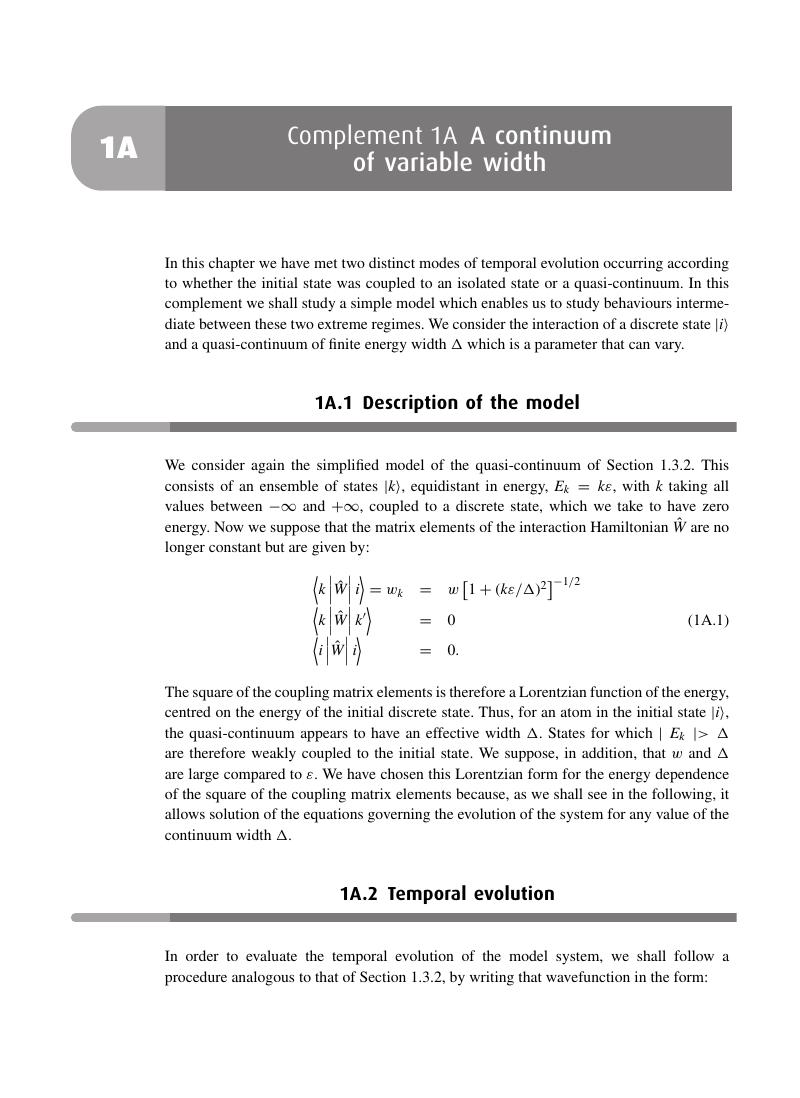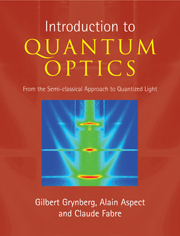Book contents
- Frontmatter
- Contents
- Foreword
- Preface
- Acknowledgements
- Part I Semi-classical description of matterlight interaction
- 1 The evolution of interacting quantum systems
- Complement 1A: A continuum of variable width
- Complement 1B: Transition induced by a random broadband perturbation
- 2 The semi-classical approach: atoms interacting with a classical electromagnetic field
- Complement 2A: Classical model of the atom-field interaction: the Lorentz model
- Complement 2B: Selection rules for electric dipole transitions. Applications to resonance fluorescence and optical pumping
- Complement 2C: The density matrix and the optical Bloch equations
- Complement 2D: Manipulation of atomic coherences
- Complement 2E: The photoelectric effect
- 3 Principles of lasers
- Complement 3A: The resonant Fabry–Perot cavity
- Complement 3B: The transverse modes of a laser: Gaussian beams
- Complement 3C: Laser light and incoherent light: energy density and number of photons per mode
- Complement 3D: The spectral width of a laser: the Schawlow–Townes limit
- Complement 3E: The laser as energy source
- Complement 3F: The laser as source of coherent light
- Complement 3G: Nonlinear spectroscopy
- Part II Quantum description of light and its interaction with matter
- Part III Applying both approaches
- Index
Complement 1A: A continuum of variable width
Published online by Cambridge University Press: 05 August 2012
- Frontmatter
- Contents
- Foreword
- Preface
- Acknowledgements
- Part I Semi-classical description of matterlight interaction
- 1 The evolution of interacting quantum systems
- Complement 1A: A continuum of variable width
- Complement 1B: Transition induced by a random broadband perturbation
- 2 The semi-classical approach: atoms interacting with a classical electromagnetic field
- Complement 2A: Classical model of the atom-field interaction: the Lorentz model
- Complement 2B: Selection rules for electric dipole transitions. Applications to resonance fluorescence and optical pumping
- Complement 2C: The density matrix and the optical Bloch equations
- Complement 2D: Manipulation of atomic coherences
- Complement 2E: The photoelectric effect
- 3 Principles of lasers
- Complement 3A: The resonant Fabry–Perot cavity
- Complement 3B: The transverse modes of a laser: Gaussian beams
- Complement 3C: Laser light and incoherent light: energy density and number of photons per mode
- Complement 3D: The spectral width of a laser: the Schawlow–Townes limit
- Complement 3E: The laser as energy source
- Complement 3F: The laser as source of coherent light
- Complement 3G: Nonlinear spectroscopy
- Part II Quantum description of light and its interaction with matter
- Part III Applying both approaches
- Index
Summary

- Type
- Chapter
- Information
- Introduction to Quantum OpticsFrom the Semi-classical Approach to Quantized Light, pp. 34 - 37Publisher: Cambridge University PressPrint publication year: 2010

